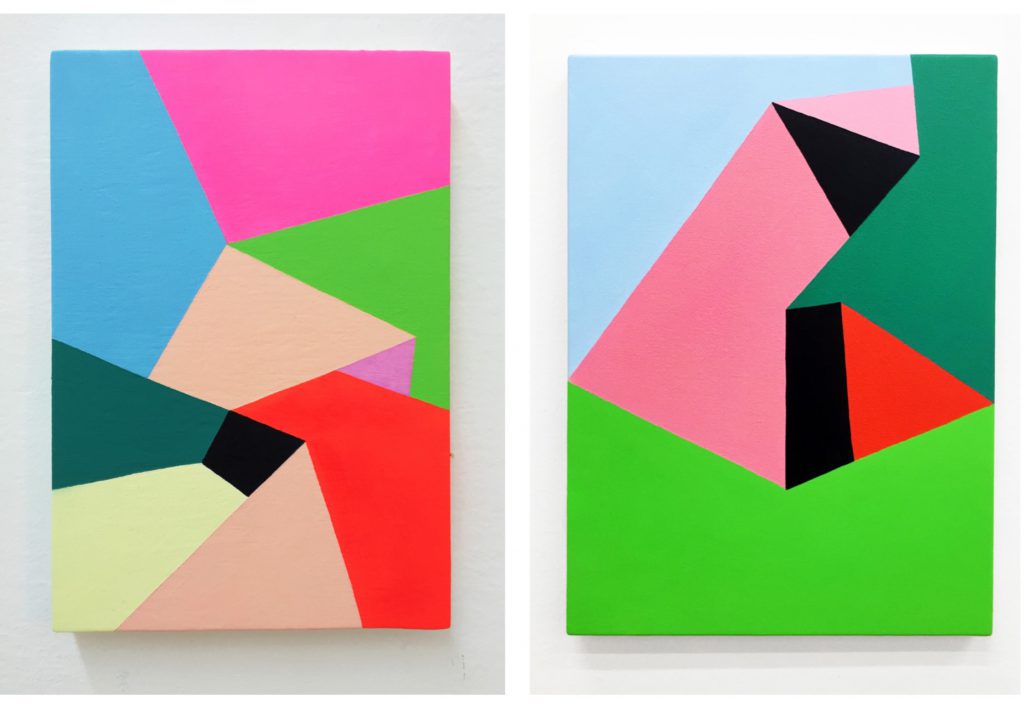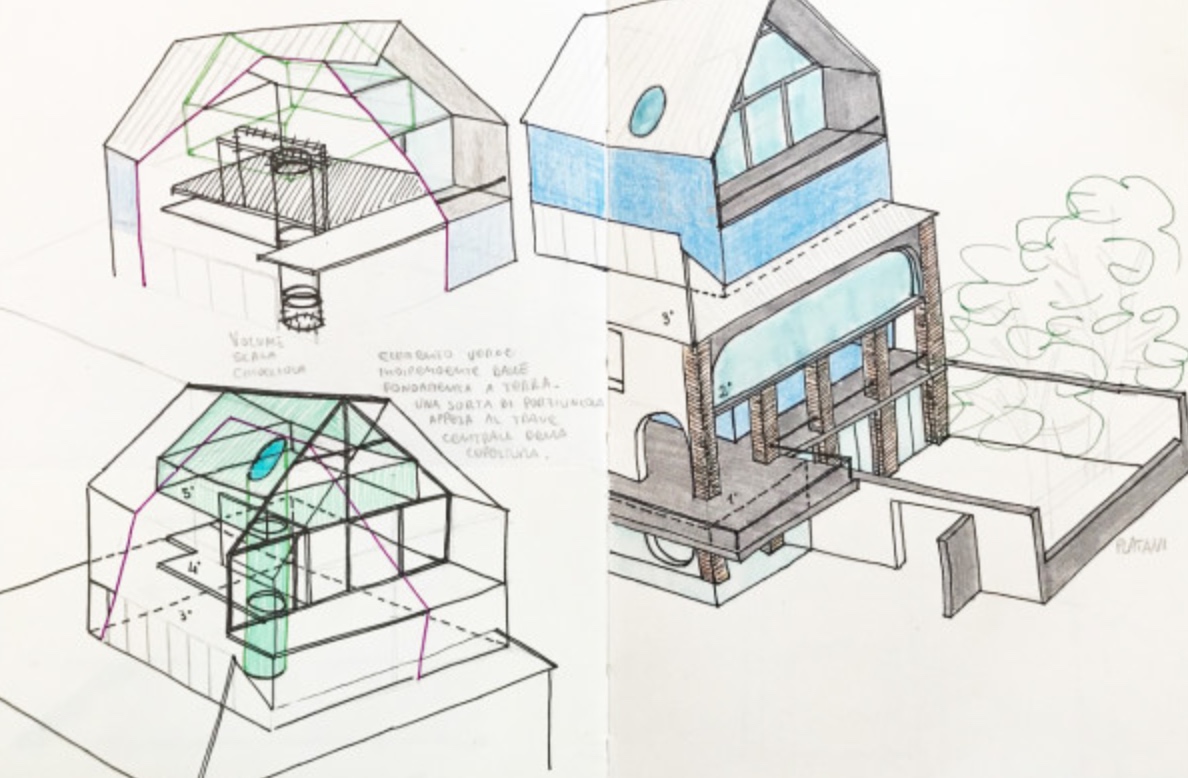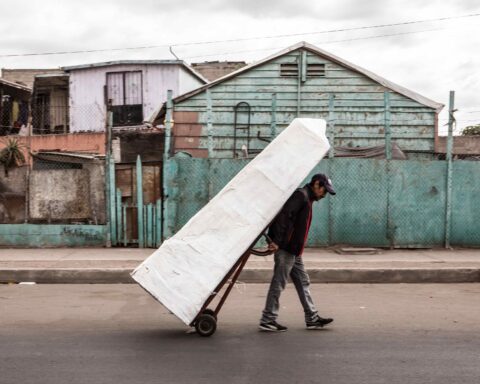Nicola Melinelli’s practice makes representation both abstract and anthropomorphic, stimulating references to art history and the natural world. From the simple form to its transformation into an architectural building, a drawing, a three- dimensional object, in a composition for a book. In the following interview, starting from the last group show Pelle d’oca curated by Simona Squadrito and I at Villa Vertua Masolo, his latest works are explored in these, only apparently, opposing positions and visions. Nicola Melinelli (Perugia 26.02.1988) is one of the founders (In 2011) of the project space INTERNO4 in Bologna. He graduated in 2014 from the Fine Arts School in Bologna.
He participated in many interesting show, like Romantic duo group show organized by Arnaud Deschin Gallery, La Friche Belle de Mai, Marseille; Elephant Talk group show organized by Andrea Kvas, at CARDRDE gallery, Bologna; Artefiera40 storia di una collezione group show curated by Claudio Spadoni and Giorgio Verzotti, Mambo, Bologna; in 2019, Multipli e unici – REPLICA artists’ books archive exhibition, curated by Simona Squadrito and Lisa Andreani, Edicola Radetzky, Milano. Carbonio e Silicio, organized By Cuoghi e Corsello, ITG C. Pacinotti, Bologna. Le Petit Sejour, group show, organized by Pierre Poumet gallery in a private apartment, Marseille (FR). Now he lives and works in Bologna
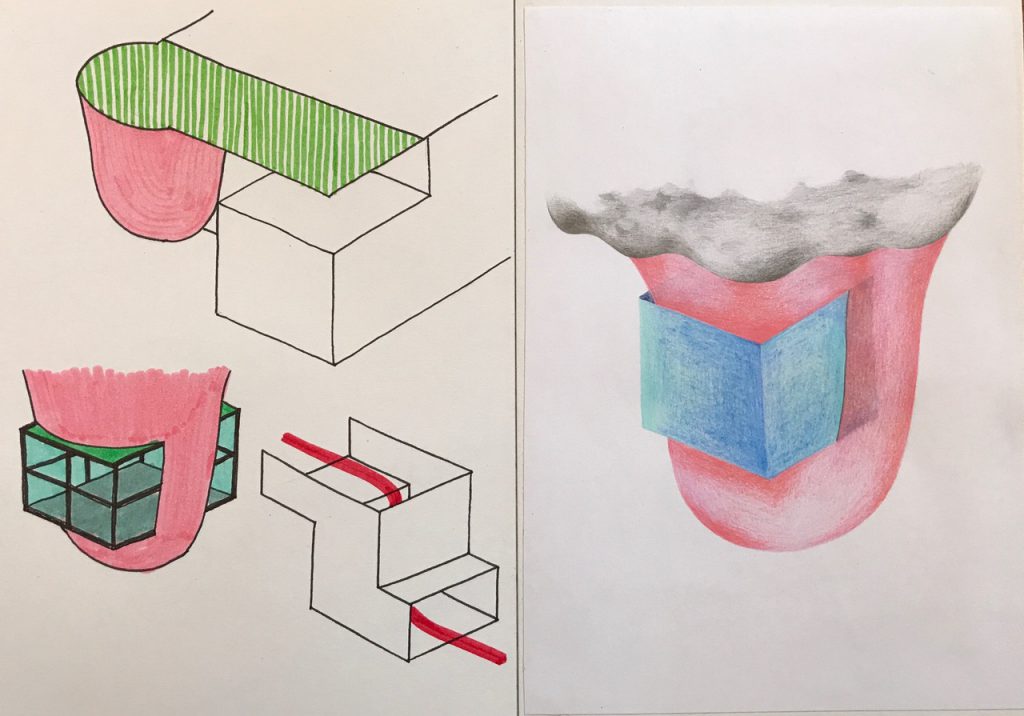
Lisa Andreani: On the occasion of the exhibition Pelle d’oca held in Villa Vertua Masolo (MB), three of your unpublished works were exhibited. These are works halfway between design objects, such as vases and sculptures. How and when were these works born?
Nicola Melinelli: It has been one year since I started working on the vases; the very first came out as simple cylindrical bodies with a perforated surface, finding inspiration from a formal interest I had started to develop in my paintings sometime earlier, where tubular shapes, like fog streams, or areation systems had already appeared. On my canvases those tubular shapes describe a movement, a possibility to cross the space. There is also the idea of melting shapes, describing fluidity, the consistency of magma, black oil, or a piece of melted plastic. Starting from this set of ideas I had the intuition of creating these tubular bodies using hot glue. At the beginning, making vases was a kind of excuse to work with three-dimensional objects, since my practice had always been mostly painting until then. Slowly these objects started to find their importance in my daily practice, and I started to study their shapes, textures and structures more deeply, as they became an exercise to study equilibrium or maquettes for oniric buildings, or even creatures, working on the edge between science fiction and plausibility. Today, I see in my vases a way I found to bring a more descriptive interest in my practice, almost on a microscopic level. I see them as creatures – perhaps plants – that could inhabit the space inside my paintings.
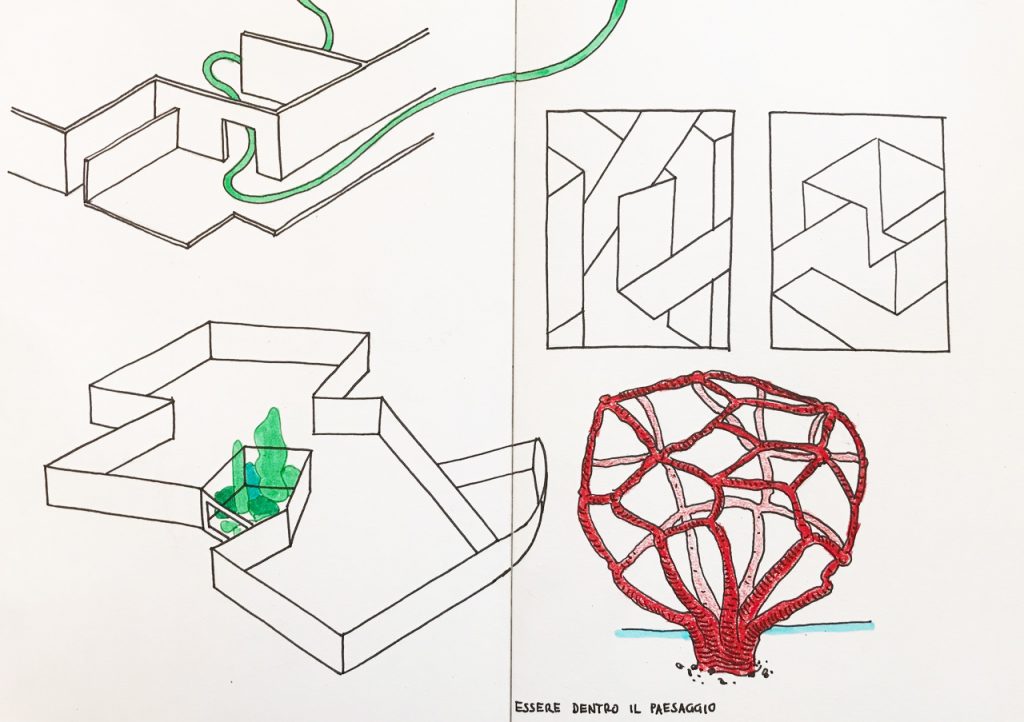
LA: Continuing with your research into these objects, it seems that you are moving away from the idea of a vase, in fact, these objects seem more and more like sculptures, which no longer respond to their intended use as, for example, containers for flowers. Is this so?
NM: We can say that the flower vase worked as the starting point, the idea I started from. A water container that allows flowers, branches or whole plants to live, far from their natural environment. I have a strong interest in plants, I have been collecting a lot of them in my home / studio for years. To study their growth, to understand their behavior, attitudes to light, and understand the evolution of their shape, but mostly to understand their meanings. A leaf with a large planar surface provides a large surface to store light rays, while a thread-like vegetation translates into a reduced need of photosynthesis, and so on. I am interested in the connection between a specific shape, and its function, and consequently, to its meaning. I like to think of a Demiurgo who creates forms of absolute pregnancy. In this regard, my biggest goal is to develop a practice that translates as faithfully as possible, the creative act of a seed that becomes a sprout and then a tree.
I like to think of my vases as the imaginary bulbs of the flowers that will fill them, or as creatures that are devouring them, or as a coral that having for a moment forgotten about the water around it, has adjusted some green in its damp mouths.
The possibility of using the vases, as you rightly pointed out, becomes more and more a secondary interest, in favor of a work on structure and textures, shape and weight. I believe that a more implicit suggestion of humidity is slowly replacing all the effectiveness that is implied in using my objects like vases (water, flowers and so on).
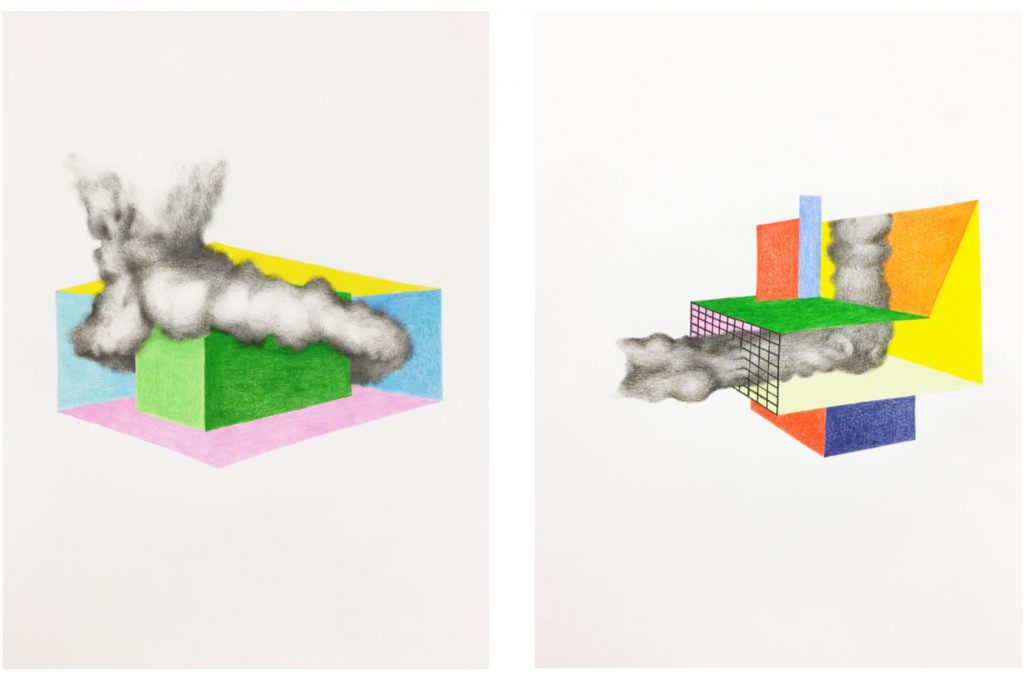
Fog tube crossing a grid, 2018 Pencil on paper, 21×29 cm
LA: Looking carefully at your production of vases, it seems possible to isolate different stylistic figures and quotations. Some of these vases, perhaps the most classic, seem to look back, for example, at the diatreta cup, that Roman vase in blown glass which is included in the Archaeological Museum Collection of Milan. Another type of vase instead recalls the impossible architectures of your paintings, a last one instead takes its form from the organic world: sea beds, corals, sponges, mushrooms, etc. Can you tell us more?
NM: The Coppa Diatreta is incredible, yes! I love that artifact. I love observing its apparent timelessness, it is such a refined and hand-crafted object that it is almost impossible to date. The grid that covers it, is an element of strong interest, that I recall in many of my vases. A feature that can also be found in a certain texture of corals or marine sponges, or in the growth of some fungus or molds, which proceeds for concentric movements, fractal evolutions, or due to successive symmetries.
However, as you say, the ideas are manifold, on the one hand there is an interest in the art of Roman glassmaking.
There are some examples of Roman vases that you could very easily mistake for Gaetano Pesce or Alessandro Mendini, considering how evolved the mastery and knowledge of the material of roman glassmakers was. On the other hand there are the an-architectonic structures of my paintings that resurface; they are in fact objects in balance, some are based on slender thread-like structures, while others do not seem to be enclosing anything even if they appear to do. So a desire to mystify the gaze reappears. To offer one vision together with a second one that puts the first into question.
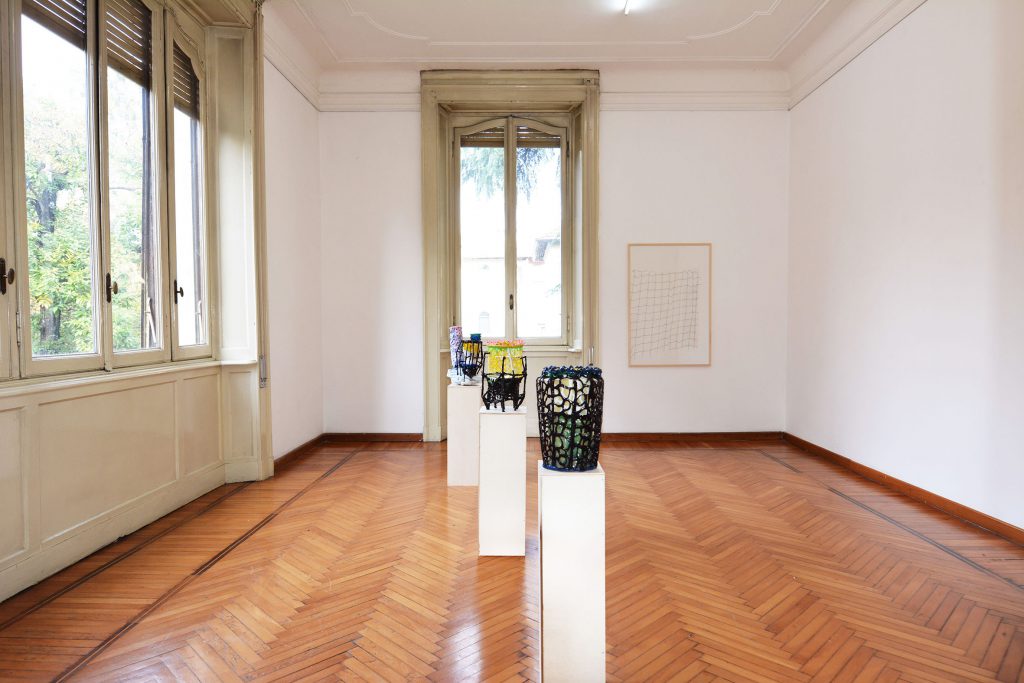
Pelle d’oca, installation view, Villa Vertua Masolo
Curated by Lisa Andreani and Simona Squadrito Photo Martina De Rosa
LA: Also in Villa Vertua Masolo, within the first exhibition of REPLICA, the Italian archive of artist’s books, one of your editions has been exhibited: Essere dentro il paesaggio / avere dentro il paesaggio (Being inside the landscape / having the landscape inside), this is a small artist’s book that recalls an articulated notebook of notes of your research, it is in fact a book of drawings and projects. Do you want to tell us something about this edition?
NM: Let’s say that each of my paintings is the result of a long process of drawing and study, each painting is a bit like the result of a mathematical problem, but we could also say that all my work derives from a large quantity of drawings and projects. I see this edition as a way to bring this drawing phase into the work itself, a graphic pseudo-scientific way of talking about the proper physics of the spaces you see in my canvases. There is the question of the landscape, the greenhouse, the garden and the window; the glass, and its reflections. So greenhouse projects, or buildings dug into the landscape, are the way to investigate bodies that take their shape from the landscape itself, that are already there, that follow its natural conformation. The greenhouse is an interior that wants to be an exterior: its limit, its skin, conceptually does not exist. Being inside the landscape / having the landscape inside is an invitation to observe the space we live in, and analyze its dynamics as a starting point to understand the landscape and be able to own it conceptually, and therefore make it part of us, have it inside us.
“Therefore, through our genetic adaptation in the environment, the so-called beauty of nature is apparently closely connected to the concept of necessity: the beauty or ugliness in nature is not present, there is a necessity that justifies every one of its figures.
We ourselves are part of that general system of necessity, and our aesthetic sensations react to the order of natural harmony in the same way as the instinctive repulsion for all the disharmonies that are artificially introduced in reason of that necessity, the conformity or not, with the general mechanisms of this adaptation.
Following this way, humans will be able to insert themselves into nature, only by understanding its intimate necessity, and if they will be able to artificially continue its behavior, and complete its work, by interpreting its volition and integrating with its figures.“ – Giulio Rupi – Alle radici dell’architettura
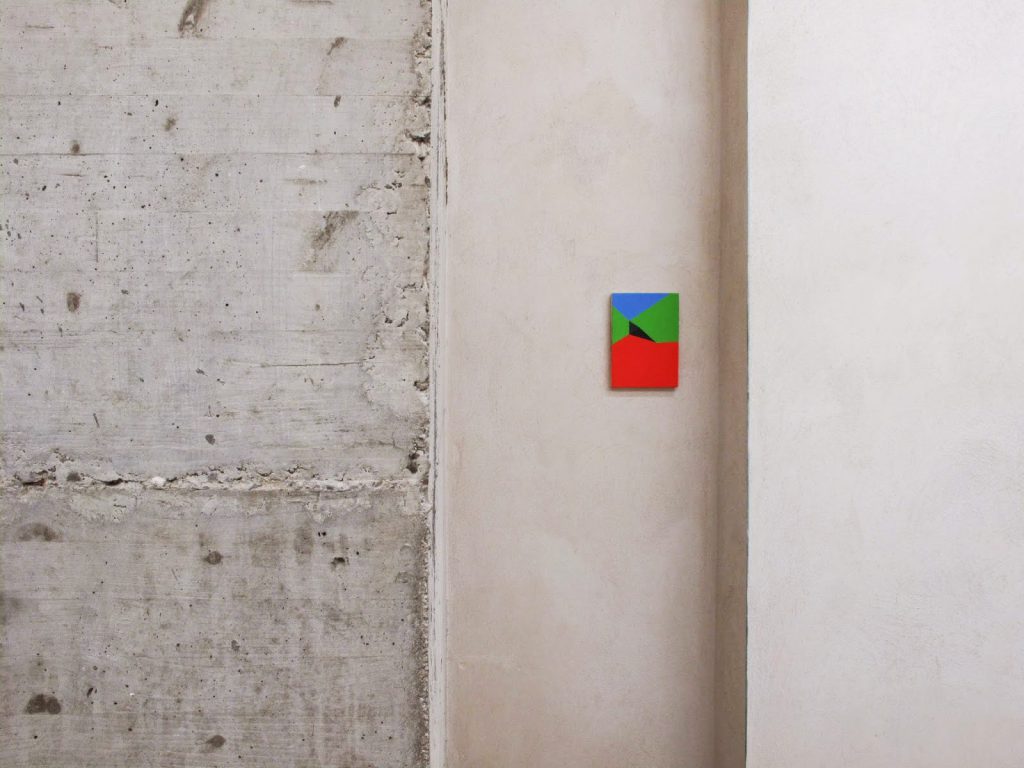
Cascate d’acqua, exhibition view CAR DRDE gallery, Bologna 2015
LA: What is the relationship between Essere dentro il paesaggio / avere dentro il paesaggio (Being inside the landscape / having the landscape inside) and your pictorial practice?
NM: The drawings in Being inside the landscape / having the landscape inside are like notes for my paintings. They are like studies. I want to find a way to open a portion of my paintings and see their properties and characteristics scientifically illustrated. The flayed bodies we see in the classics of scientific illustration open their own skin to show the conformation of their own muscle bundles. In the same way, that book of drawings, exposes the internal physics of the spaces of my paintings, the sensations I experience in making them, and the events they describe.
A cloud of smoke passes through a pipe and suddenly its trajectory is blocked by a grid. I like to think of the moment when the smoke passes through the grid, and is cut into many small squared solids of smoke, and then gets blended into a single shape, after passing the grid.
Being inside the landscape / having the landscape inside is a way to question myself about the meaning of the shapes composing our space and the resulting feelings; the – OTHER – images that they recall.

LA: Extrema Captivatio is a large drawing (430×200 cm) made over several years with the artist Giovanni Copelli. A constantly expanding divertissement that recalls the Garden of Delights by Hieronymus Bosch but in a contemporary punk key. Can you tell us how this project evolved and if and how you plan to continue this work?
NM: Extrema Captivatio, as you mentioned, is a four-hand drawing I made together with Giovanni Copelli, artist and friend, that we started in 2016. It began as a divertissement of collaborative drawing: we both constantly changed and completed each other’s drawing and therefore the narrative initiated by the other, weaving together our graphic capabilities and our different expression approach. On the occasion of the Pelle d’oca group exhibition, in Villa Vertua Masolo, curated by Simona Squadrito and Lisa Andreani, we were invited to participate both as individual artists, and also with this drawing we realized together. So we decided to expand the drawing by adding more paper on each side, until it became 430×200 cm, starting from the 200×150 cm version from 2016. From the beginning the drawing was planned with the intent of expressing an excess of narratives, a swarm of figures, creatures, objects, and spaces, constantly intertwined. While you observe the drawing, the narration is made more and more complex, deepened and changed, because the more you go into the details, the more you notice elements that were not immediately there. So it’s a long story, a whispered tale.
A Universal Judgment, an Apocalypse, not without a strong ironic touch, where quotes from the history of painting, recurrent themes, and iconographies from different periods, find their place in a single large cabaret, where the narration unfolds in the same way as traversing a maze. There are many possible trajectories, and meanings. It is an invitation to cross through an image, without necessarily having to find the exit.
And yes, we consider it a work in progress, meaning that it is possible to expand it by adding paper, and continue its tales, and we expect to do it as soon as possible.
